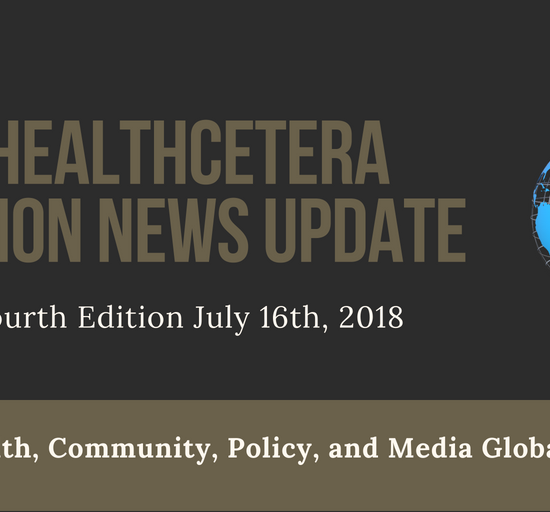Photocredit: Andrew Griggith
What’s next? The Affordable Care Act (ACA) has not remedied the cost problem in the United States. Americans balked at Congressional plans to save the federal government money by raising consumer costs while dramatically cutting coverage and imposing unsustainable funding reductions on the states. We need a better plan! Have we reached a breaking point where Congressional leaders will actually work across party lines, put aside self-interests, and look for long-term, sustainable changes? The verdict is still out. The next few weeks will be critical.
Meaningful change requires dealing with the metaphorical elephant in the room. The term elephant in the room connotes a big problem or issue that is avoided or minimized and for which there is little real dialogue, discussion, or debate. The big problem that Congress and all Americans need to address with inclusive and deep dialogue is unsustainable healthcare costs in the United States.
It is hard to separate what we call the big three: cost, quality, and access. We have learned that you cannot address access problems, as the ACA did, without addressing cost problems. Years of research have shown that you can increase value in healthcare, which means that healthcare is concurrently cost-effective, appropriate, and efficiently delivered. Simply said: better healthcare does not have to cost the exorbitant prices we currently pay. A quick look at the Commonwealth Fund’s comparison of international health systems reveals a sad tale about the United States. In the report, eleven democratic countries with advanced economies are compared to one another on a complement of measures related to health system performance. The U.S. has the highest per capital cost, 51% more than the second most expensive country, Switzerland, and 169% more expensive than the country with the lowest per capital costs, New Zealand. Paying more does not get you more. The U.S. ranks last on a measures related to Healthy Lives. The U.S. scores last on Access: Cost-Related Problems. According to the Kaiser Family Foundation, the U.S. has the lowest life expectancy at birth when compared to similar countries. In 1980 life expectancy in the U.S. was similar to comparator countries. However in the ensuing time the U.S. has gained five years while other countries have gained seven.
Why is the cost of healthcare so high in the United States? One reason is distorted supply, demand, and pricing. Competition does not reduce prices in healthcare. Pricing of healthcare services is illogical. Prices are not based on material and labor cost and prices varies depending on who is paying. Medicare prices tend to be lower because the purchaser, the federal government, has exercised their bargaining power, with the exception of Medicare Part D. With private insurers we sometimes see just the opposite. Provider consolidation tips the balance of power in providers’ favor in negotiations with private insurers. The biggest losers are the uninsured who have no one bargaining on their behalf and are at the mercy of hospitals, physicians, and other healthcare providers.
Prices in healthcare will rise to whatever the market will bear. The cost of drugs is in a class of its own. The U.S. spends more on drugs than any other country. U.S. per capita spending on drugs exceeds that of other countries. The U.S. spends $858 per person while the average for 19 other industrialized countries is $400. One way to change this is to do what other countries do and allow the federal government to negotiate with the pharmaceutical companies. Currently the provisions of Medicare Part D prohibit this.
The U.S. has a market-based economy. This works well for most consumer goods and services, but not healthcare. Market-based solutions in healthcare are harmful to Americans. At best healthcare is an imperfect market. A major concern is that the ACA repeal and replace strategies currently being considered by the Congress are based on market principles.
Buying a car is much different than receiving open heart surgery. When you were buying a car you make the decision. However in healthcare, the services you need are generally determined by the person and/or institution that provides the service. This can set-up perverse incentives. If you are facing open heart surgery, you are generally ill-equipped and often restricted in your decision to buy the service. This is because the supply and demand dynamics we see when purchasing a car are distorted. The healthcare market does not offer free, unrestricted competition based on price and quality. Patients usually do not have the time or information needed about the appropriateness or value of the surgery. In general, patients are unable to amass the most important information and determine how it applies to them to ascertain if they truly need the surgery, what the options are, where to have the surgery, and who should perform the surgery. Another complicating factor is that is a patient you are shielded from the full cost of the service if you have insurance and because it is near impossible to compare prices.
The second reason healthcare costs are so high is because the mix of services that Americans receive. More care is not better care. By some estimates, a third of what the U.S. spends on healthcare may be wasteful. More treatments may benefit providers’ bottom line but not necessarily patients. In the United States we love high-tech care and too many resources are expended on tertiary and futile care to the detriment of prevention and primary care. This makes no sense when investments and prevention in primary care pay much greater dividends and result in better outcomes.
Another reason that healthcare costs are too high is because of system costs and profits. The use of multiple payers and providers of care and lack of standardization and inter-operability, as well as the profit motive that has come to characterize U.S. healthcare delivery, results in excessive administrative costs. Healthcare administrative costs in the United States (25.3%) are double Canada and Scotland (12%). Furthermore, there is no link between higher administrative costs and better quality.
Since 2010 when the ACA became law, profits for managed care giants United Healthcare. Aetna, Anthem, Cigna, Humana, and Centene have risen at a rate far greater than the Standard and Poor’s Stock Index. The index return was 135.6% while stocks for the named managed care companies returned in excess of 300% plus dividends.
Does competition have a role in healthcare? I think it can. However strategic regulation and government oversight is needed to address the problems we currently face. There are other options but the gap between where we are and the other options is far greater than what it will take to work with in the basic structure of the ACA.
For insurance to work, the risk pool must be large and diverse. The individual mandate is a necessity if our goals are to extend healthcare coverage to all Americans and assure access to needed services at a cost we can sustain. As we have seen, uncertainty is destabilizing. We need to take the time as a country to debate ACA reform but in the meantime the federal government and state insurance commissioners need to support the ACA.
The federal government needs a larger role in negotiating and managing prices for healthcare. We can start with the federal government negotiating prices for the Medicare Part D program. As a country we should consider the reform approach Switzerland took in 1999 when they determined that insurance companies could not be for-profit entities. The United States is alone in the dominance of largely unregulated, for-profit health insurance companies.
As a country, we need to pivot towards prevention and primary care. Reimbursement is the best lever for changing behavior. Reimbursement needs to be structured to reward value, including keeping people well, maximizing the functioning of individuals regardless of their health status, and paying only for needed services based on available evidence and in a system with price transparency and consistency. We cannot cost-shift our way around the problem. We must deal with the elephant in the room and address costs head-on.
Carole R. Myers, PhD, RN is an Associate Professor at the University of Tennessee with a joint appointment in the College of Nursing and the Department of Public Health. She has recently been appointed as Senior Fellow for the George Washington University Center for Health Policy and Media Engagement.









